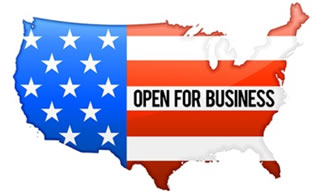With the specter of pandemic shutdowns (hopefully) in the rearview mirror, our domestic Manufacturing sector has experienced an ongoing surge in demand and output. It is reassuring to see that the pre-pandemic conditions of strong demand for manufactured products have weathered the storm and created a post pandemic manufacturing economy that shines optimistic.
But there is no doubt that we continue to see some limiting factors that remain a challenge to achieving our true potential. As was the case during the pandemic, we are still experiencing staffing and raw material constraints that are a significant limiting factor. And with the allocations being placed on certain materials, we are seeing an inflationary surge the likes of which has not been seen for some time.
Looking at the Steel industry, a perfect storm of sorts has driven published Steel indexes to levels as much as 300% over previous “norms”. And this has occurred while one of the primary consumers of steel products, the Automotive Industry, has been somewhat on the sidelines as the chip crisis has constrained Auto production levels well below the current true demand levels. When the Auto manufacturing sector roars back to life, you can be certain that the demand curve will press towards additional upward costs and limited allocations for Steel products.
A counter to this may be that we operate in a global economy, where material supplies to support domestic demands can be met from an array of offshore sources. But given the pandemic effect and the current unrest in the Ukraine, it is not likely that the traditional sources of global materials will be participating significantly in the domestic manufacturing sector for some time. And as manufacturing across the globe emerges into a post pandemic state, many regions of the world have their available manufacturing capital, material allocations and human capital focused on supporting their own domestic market demands.
Of critical importance in these market conditions are the support and relationships that we maintain with our domestic and global supply partners. Cost pressures will always be a critical aspect of the manufacturing success formula. But in these times, the availability of material is of equal to greater importance to the cost. It has been said many a time that one can identify the cost of material inventory, but it is hard to identify the cost of not having inventory. Better to put yourself in a position to say yes to your valued customers, even when prices are rising, than to have to decline the opportunities to participate because you lack the material allocation to effectively support your customers.
The people puzzle is one that is not likely to be solved in the immediate term. Staffing in the manufacturing sector is a significant challenge across the board. Traditional employment incentives have changed and evolved and are forcing companies to redefine how we go about attracting, retaining, and compensating the talent required to move our businesses forward. This is actually an HR phenomenon that preceded the Pandemic but has been made significantly more poignant as we emerge from the shutdowns.
We are proud of the investments made in our people, in our supply relationships and the commitment to our mission that Sko-Die has made throughout our 75 years in business. These strategic relationships have allowed us to grow and excel in these challenging times. We wish everyone the best of health as we navigate through the current circumstances and work together to capitalize on the opportunities before us.
At Sko-Die we remain…

